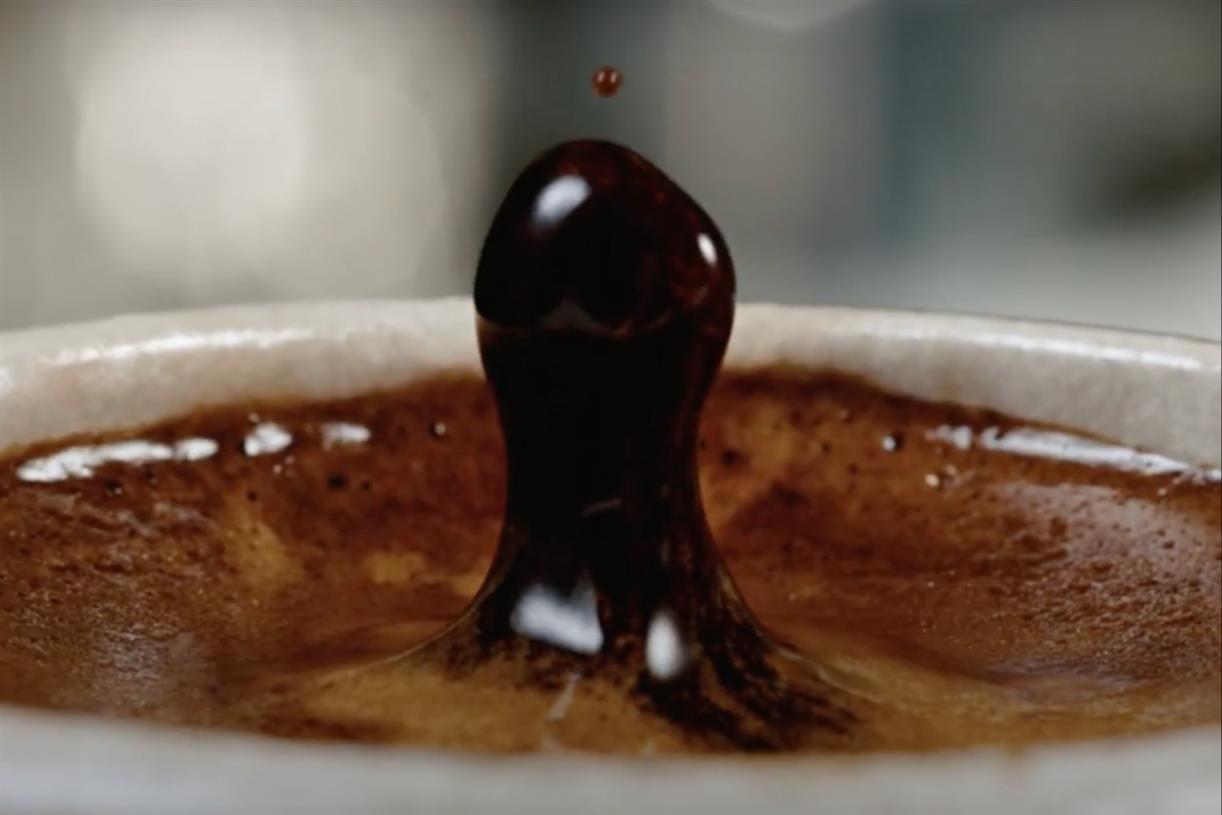Loop marketing examples from companies we love
Loop marketing represents a fundamental shift from traditional linear funnels to a continuous growth engine, where every customer interaction creates expansion opportunities. Companies practicing loop marketing — whether through growth marketing strategies, behavioral marketing triggers, or integrated offline marketing...

Loop marketing represents a fundamental shift from traditional linear funnels to a continuous growth engine, where every customer interaction creates expansion opportunities. Companies practicing loop marketing — whether through growth marketing strategies, behavioral marketing triggers, or integrated offline marketing touchpoints — transform one-time buyers into active participants who fuel sustainable business growth. Loop Marketing is HubSpot’s four-stage framework for compounding growth through connected customer experiences that generate momentum at each stage. Unlike closed-loop marketing, which tracks attribution, proper Loop Marketing creates self-reinforcing cycles where satisfied customers naturally drive online word-of-mouth marketing, product adoption spreads organically, and each completed loop strengthens the next. For companies ready to implement these strategies, HubSpot’s Loop Marketing Playbook provides the tactical framework to identify, build, and optimize growth loops that transform customer success into sustainable business expansion. Moreover, this article will break down real-world Loop examples and demonstrate how to replicate their success using HubSpot’s Smart CRM. Table of Contents: Loop Marketing is HubSpot’s four-stage, AI-enabled framework that creates compounding growth through continuous customer engagement cycles rather than one-way funnel progression. Unlike traditional marketing funnels, where customers exit after purchase, loop marketing transforms every interaction into fuel for the next cycle, building momentum that accelerates with each completion. The Loop Marketing framework directly connects to established growth loop principles pioneered by companies like Dropbox and Slack, while also incorporating systematic AI integration and measurable compounding effects at each stage. The Loop Marketing framework operates through four interconnected stages that form a complete system: The ‘Express’ stage of Loop Marketing defines brand identity and ideal customer profile (ICP) while establishing the foundational messaging that resonates with target audiences. Then, its ‘Tailor’ stage of Loop Marketing personalizes content and experiences using AI-powered insights from previous loop completions, creating increasingly relevant touchpoints for each segment. Next, the ‘Amplify’ stage of Loop distributes content across channels, creators, and AI engines, leveraging both owned and earned media to maximize reach and engagement. Lastly, the ‘Evolve’ stage analyzes performance data and customer feedback to optimize future loops, ensuring each cycle performs better than the last. The shift to loop marketing addresses three critical limitations of funnel-based approaches: Loop Marketing addresses these challenges by treating every customer as both a beneficiary and a contributor to growth, creating network effects where success with one customer directly improves outcomes for subsequent customers. Pro Tip: HubSpot’s pre-existing, CRM-specific tools are well-suited for Loop Marketing tactics: As the company that coined “Loop Marketing,” HubSpot’s approach to its own methodology is as follows: its free CRM creates a usage-based expansion loop, where initial adoption naturally reveals the need for advanced features. Additionally, by combining human authenticity with AI efficiency, HubSpot enhances customer lifetime value, organic growth velocity, and platform adoption depth. Here’s a closer look at HubSpot’s Loop Marketing approach: Here’s how marketing teams can replicate HubSpot’s approach to Loop Marketing with its tools: Instagram transforms every posted photo into discovery fuel through hashtags, location tags, and its Explore page algorithm, creating a self-reinforcing content ecosystem where creation drives discovery. Additionally, by combining human creativity with Meta AI’s sophisticated recommendation engine, Instagram ensures that genuine moments reach the right audiences while AI-powered features like automatic alt-text, content suggestions, and Smart Reply maintain accessibility and engagement at scale. Instagram’s approach to Loop Marketing works like this: Here’s how marketing teams can replicate Instagram’s approach to Loop Marketing with HubSpot: Slack’s version of Loop Marketing seems to operate on team-level network effects. Each new team member adds value to communication for all existing members, resulting in faster adoption rates compared to top-down software deployment. By combining human-centered collaboration with Slack’s AI intelligent automation — including automated summaries, smart search, and workflow builder — Slack ensures authentic team interactions scale efficiently while AI handles repetitive tasks that would otherwise create friction. More specifically, Slack’s approach to Loop Marketing works like this: Here’s how marketing teams can replicate Slack’s version of the Loop Marketing methodology: Pro Tip: HubSpot’s account-based marketing tools, combined with its Breeze AI, automatically trigger multi-touch campaigns that encourage team-wide adoption before customers even request additional seats. Dropbox’s execution of Loop Marketing resembles an engineered bidirectional referral loop, where both the referrer and referee receive free storage, aligning user incentives with company growth while addressing the cold start problem through the immediate provision of tangible value. By combining genuine user need with AI-powered intelligence — including smart sync, intelligent file suggestions, and automated organization — Dropbox ensures that storage becomes more valuable as users add more content, making referrals feel like helpful recommendations rather than marketing tactics. More specifically, Dropbox’s approach to Loop Marketing works like this: Here’s how marketing teams can replicate Dropbox’s approach to Loop Marketing with HubSpot: Spotify’s annual “Wrapped” campaign transforms private listening data into public social currency, creating a yearly viral moment where users voluntarily advertise their platform usage while generating FOMO for non-users. By combining deeply personal music tastes with AI-powered pattern recognition — including audio analysis, collaborative filtering, and natural language processing — Spotify creates data stories that feel intimately human while being generated entirely at scale, making each user feel uniquely understood among 500+ million users. Spotify’s approach to Loop Marketing looks like this: Here’s how marketing teams can replicate Spotify’s approach to Loop Marketing with HubSpot: Amazon’s implementation of Loop Marketing involves a review system that creates multiple interlocking loops where purchase data improves recommendations, reviews guide future purchases, and verified purchase badges create trust signals that accelerate conversion. Here’s a closer look at how Amazon’s Loop Marketing strategy works: Here’s how marketing teams can replicate Amazon’s approach to Loop Marketing with HubSpot: Notion’s iteration of the Loop Marketing framework transforms user workspaces into growth engines through template sharing, where productivity solutions become discovery mechanisms that showcase platform capabilities while solving immediate user needs. By combining human creativity in workspace design with Notion AI — including content generation, summarization, and automated formatting — Notion ensures that complex workflows remain accessible to both beginners and experts. At the same time, power users can build increasingly sophisticated systems that feel personally crafted. Here’s how Notion’s approach to Loop Marketing works: Here’s how marketing teams can replicate components of Notion’s approach to Loop Marketing with HubSpot: Duolingo’s approach to Loop Marketing involves a streak system that transforms language learning into a social commitment device where daily practice generates shareable achievements that create accountability pressure and competitive dynamics. By combining human motivation psychology with AI-powered personalization — including adaptive lesson difficulty, optimal reminder timing, and GPT-4-powered conversations — Duolingo ensures that learning feels personally tailored while maintaining the social dynamics that drive users to practice daily. Take a closer look at Duolingo’s approach to the Loop Marketing methodology: Here’s how marketing teams can replicate elements of Duolingo’s approach to Loop Marketing with HubSpot: LinkedIn’s execution of Loop Marketing appears to be driven by engagement through profile completion gamification; each added detail enhances search visibility, match quality, and network recommendations, creating compound value from incremental actions. By combining professional identity with AI-powered optimization — including skills assessments, content recommendations, and recruitment algorithms — LinkedIn ensures that profile building feels like genuine career development. At the same time, the platform’s AI maximizes the professional opportunities each data point creates. Here’s a more detailed breakdown of LinkedIn’s approach to Loop Marketing: Here’s how marketing teams can recreate aspects of LinkedIn’s approach to Loop Marketing with HubSpot: Uber’s implementation of Loop Marketing looks like in-app surge pricing, creating self-balancing loops where price signals redistribute supply and demand in real-time, using economic incentives to solve marketplace imbalances without manual intervention. By combining human decision-making autonomy with AI-powered market predictions, including demand forecasting, route optimization, and dynamic pricing algorithms, Uber ensures that drivers maintain their independence. At the same time, AI orchestrates system-wide efficiency, making every ride feel personally chosen rather than algorithmically assigned. Here’s a more detailed explanation of Uber’s execution of Loop Marketing: Here’s how marketing teams can replicate Uber’s Loop Marketing strategy with HubSpot: Loop marketing is HubSpot’s four-stage framework (Express, Tailor, Amplify, Evolve) that creates continuous growth cycles, where each customer interaction strengthens the next. In contrast, traditional funnels guide customers through linear stages, culminating in a purchase. Funnels operate on a one-way path, where customers enter at the awareness stage and exit after conversion, necessitating ongoing new lead generation to sustain growth. Loop marketing transforms customers into active participants who: Each completed loop reduces customer acquisition costs while increasing lifetime value. As previously mentioned, Spotify’s “Wrapped” campaign exemplifies Loop Marketing by transforming user listening data into shareable social content that drives organic brand mentions and social posts annually, creating new user acquisition while deepening existing engagement. Additionally, Notion built a template-sharing loop where users create workspace templates that serve as discovery mechanisms for new users, who then create their own templates, thereby expanding the product’s use cases and reach exponentially. Start by mapping your existing customer journey to identify where natural loop opportunities exist — moments where customer success creates shareable outcomes, data insights, or network effects. Then, define clear triggers and rewards at each stage: Build the minimum viable loop first by focusing on one high-impact cycle — typically product usage data that improves recommendations or customer success stories that drive referrals — then layer additional loops as the foundation strengthens. Content loops transform user-generated content or behavioral data into valuable resources that attract new users while engaging existing ones. That said, review platforms, community forums, and collaborative tools excel in this area. Viral loops incentivize sharing through reciprocal value, where both referrer and referred benefit, achieving viral coefficients above 1.0 when properly designed. However, data loops utilize aggregated customer insights to enhance: All of this creates competitive moats that strengthen with scale. Social loops leverage network effects where product value increases with user count — messaging platforms, marketplaces, and collaboration tools naturally create these compounding dynamics. First, track loop velocity by measuring time from initial engagement through complete cycle completion — successful loops show decreasing cycle times as optimization improves. Then, monitor the loop multiplier effect: how many new participants each completed loop generates through referrals, content creation, or network expansion — healthy loops achieve multipliers above 1.5. Afterwards, measure compounding metrics, including: Loop marketing requires a sufficient transaction frequency or engagement depth to generate meaningful data and behavioral patterns; single-purchase, low-engagement products struggle to create sustainable loops. Industries with strict regulatory constraints surrounding data sharing, customer communications, or referral incentives may find loop mechanisms to be legally restricted or economically unviable. Conversely, early-stage companies without product-market fit should focus on a fundamental value proposition before building loops, as loops amplify existing dynamics but cannot create demand where none exists. Lastly, B2B enterprises with lengthy and complex sales cycles may find it more complicated to establish loop dynamics than relationship-based account expansion strategies. Begin with micro-loops focused on your most engaged users, rather than trying to activate your entire base. Identify the top 10% who already exhibit loop-like behaviors, such as: Next, leverage partner loops by integrating with platforms that already have network effects, allowing you to tap into existing loop dynamics while building your own audience. Then, create artificial initial velocity through manual processes that simulate loop outcomes by personally facilitating introductions or creating initial content yourself. These efforts will generate the success stories and data insights needed to automate future loops. Overall, focus on quality over quantity by optimizing for loop completion rate rather than volume, as 100 users completing loops generates more sustainable growth than 1,000 users starting but abandoning them. The shift to loop marketing represents more than tactical optimization; it’s a strategic imperative for driving personalization at scale. And, most importantly, the numbers exemplify this. According to HubSpot’s 2025 Loop Marketing Report, 93% of U.S. marketers who use some level of personalization or segmentation in their marketing say it has a moderate to high positive impact on marketing-driven leads or purchases. The companies profiled in this article demonstrate a fundamental truth: sustainable growth no longer comes from pushing customers through linear funnels but from creating self-reinforcing systems where every interaction compounds future success. Loop marketing transforms traditional marketing challenges into systematic advantages BY : Ready to transform your marketing from a funnel into a growth engine? Visit HubSpot’s Loop Marketing Playbook to access the complete framework for identifying, building, and optimizing loops that turn customer success into sustainable business expansion.What is Loop Marketing?

Loop Marketing Examples From Companies We Love
1. HubSpot

2. Instagram

3. Slack

4. Dropbox

5. Spotify

6. Amazon

7. Notion

8. Duolingo

9. LinkedIn

10. Uber

Frequently Asked Questions (FAQ) About Loop Marketing
What is loop marketing and how is it different from a funnel?
What are some real-world examples of loop marketing?
How do I build a loop marketing system for my business?
What types of growth loops should I consider?
How do I measure if my loop is working?
When is loop marketing not a good fit?
How can I start a loop if I don’t have a big audience?
Loop Marketing is the future of marketing strategy.

 FrankLin
FrankLin 












_3.jpg)



















